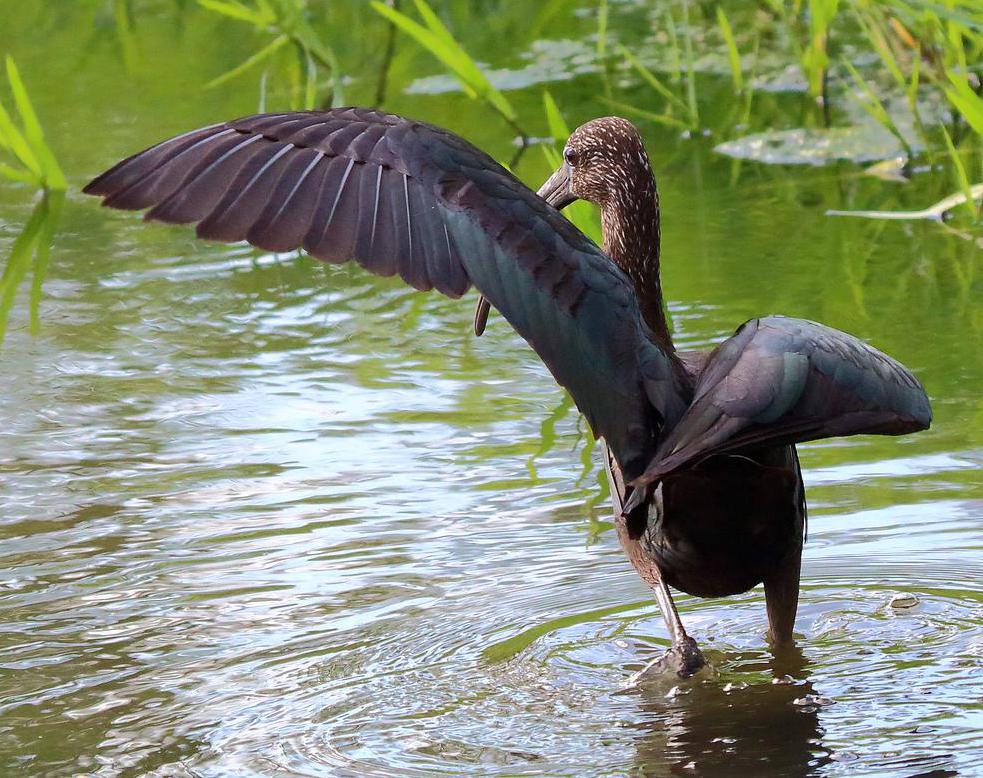What is a Glossy Ibis?
A glossy ibis is a dark-colored bird that has a long, curved beak and lives mainly in coastal areas and wetlands. It is known as Plegadis falcinellus within the scientific community. This type of bird often is called a shorebird in North America, and it sometimes is called a wading bird.
An adult glossy ibis usually is about 20 to 25 inches (51 to 64 cm) tall, and its wingspan is about 3 feet (92 cm) across. It has an oval body and a long neck, long legs and a long, curved beak. The glossy ibis has a dark, brick red head, neck and chest, and its back, wings and tail are a shiny, glossy green. Its beak and legs are dark brown or gray. Young birds that haven't fully matured have similar coloring, but it is muted.

The glossy ibis lives in coastal areas and wetlands. Its preferred habitat includes swamps, marshlands and flooded fields near wooded areas. It can be found all over the world in the warmer areas of Europe, Asia, Africa, North and South America and Australia. In North America during the warmer months, it can be found all along the eastern coast and along parts of the Gulf coast, an area spanning from Maine to Texas. During the winter, the bird migrates and can be found south of South Carolina.

The glossy ibis has an extremely varied diet. It eats a variety of food, such as seeds, insects, crayfish, small fish, frogs, small snakes and different types of worms. Walking slowly through an area, the glossy ibis hunts for food by using its long beak to poke around in the mud and underwater plant growth, feeling for food. It usually will hunt and feed in small groups with other wading birds.

Pairs of glossy ibises stay together and mate during the breeding season. Working together, the male and female build a tightly woven, round nest. The nest usually is built in a low tree, a bush or occasionally on the ground in dense brush. Often, the glossy ibis will build nests in a common area with other water birds, such as herons, as well as other ibises. After the nest is built, the female ibis lays three to four blue-green eggs.
Both male and female ibises incubate the eggs for about three weeks. After the eggs hatch, the baby chicks are helpless for a while. They are cared for by both parents, who feed them by regurgitating food for them into their beaks. After about a month, the chicks are able to start leaving the nest. By the time they are about 2 months old, the young ibises are able to go with their parents to hunt for food and become independent.
AS FEATURED ON:
AS FEATURED ON:













Discuss this Article
Post your comments